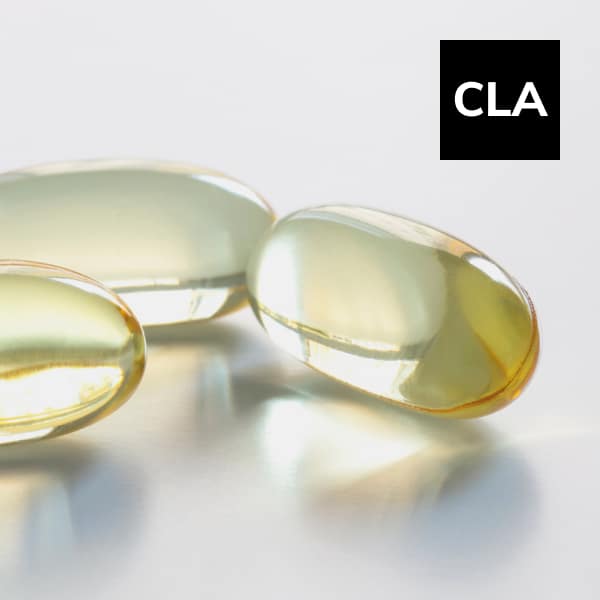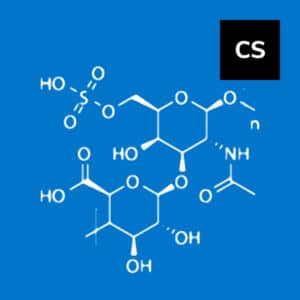Overview
Conjugated linoleic acid is a polyunsaturated omega-6 fatty acid present in vegetable oils, dairy products, and grass-fed beef. CLA supplements are manufactured by chemically modifying vegetable oils.
Key Benefits
- Supports weight loss
- Helps reduce body fat and increase muscle mass
- Reduces BMI (body mass index) with long-term use
- Helps reduce serum leptin
- Helps lower LDL cholesterol
History of Usage
In 1978, Michael Pariza, Ph.D., discovered an extract in beef that appeared to be anticarcinogenic. In 1987, he identified this extract as CLA, which led to nine years of experiments at the University of Wisconsin-Madison. A surge of scientific studies and research on how CLA affects body mass and other beneficial effects on human health followed.
A comprehensive study shows CLA as a multi-beneficial health promoter to play an essential role. Hundreds of studies worldwide have shown that CLA may play a role in healthy weight management, the reduction of some forms of cardiovascular disease, and other inflammatory states.
Biochemistry
CLA is a linoleic acid combination made up of bioactive geometric isomers. CLA comes in two main forms in the diet: c-9,t-11 CLA, and t-10,c-12 CLA. Both provide health benefits, especially when it comes to improving body composition.
CLA is in many animal products (dairy, beef, and seafood), especially in products from animals that are grass-fed. It’s also in sunflower and safflower oil. Cooking food may increase levels of CLA. Obtaining CLA from the diet is problematic, since today it is only present in very low levels in foods, due to less grazing and more feed, such as corn and soy, being consumed by the majority of ruminant animals.
The solution is to increase the consumption of CLA from elsewhere. This can be accomplished through supplements and food fortification. Commercial CLA is made from linoleic acid found in sunflower and safflower oil using a procedure that transforms the linoleic acid into conjugated linoleic acid.
CLA appears to have direct effects on adipocytes, the primary sites of fat accumulation, as well as skeletal muscle cells, which are the primary sites of fat burning. It has been postulated that the biochemistry of CLA body fat reduction involves fat store inhibition in adipocytes along with increased b-oxidation in skeletal muscle. The prevention of immune-induced catabolism may play a role in the overall growth of skeletal muscle tissue.
Many of the conjugated fatty acid isomers in CLA have been shown to have anti-carcinogenic, anti-adipogenic, anti-inflammatory, and immune regulating characteristics in studies.
Recent Trends
CLA was granted GRAS certification for specific food categories on July 24, 2008. Yogurt, fluid milk, soy-based beverages, fruit juices, nutritional bars, and meal replacement beverages are now permitted to contain CLA.
This allowed food processors to incorporate a beneficial healthy fat that had been excluded from the definition of trans fatty acids by the FDA (Title 21 of the Code of Federal Regulations, Part 101). It is also sold in soft gels, capsules, weight loss products, and protein powders.
The CLA market is estimated to grow from $42 million to $52 million with a CAGR of 5.7% from 2021-2025.
Precautions
- Pregnant and breastfeeding women should consult with their health care provider before use.
- May cause stomach upset and gastrointestinal symptoms, headache, or backache. In rare instances, it has caused liver toxicity.
- Individuals with diabetes should avoid use.
- May increase bleeding in individuals with bleeding disorders.
- Stop using at least two weeks before a scheduled procedure.
- Individuals with diabetes should consult with their health care provider before use.
- May lower HDL (good cholesterol)
References
- Gaullier JM, Halse J, Høye K, Kristiansen K, Fagertun H, Vik H, Gudmundsen O. Conjugated linoleic acid supplementation for 1 y reduces body fat mass in healthy overweight humans. Am J Clin Nutr. 2004 Jun;79(6):1118-25. doi: 10.1093/ajcn/79.6.1118. PMID: 15159244.
- Gaullier JM, Halse J, Høye K, Kristiansen K, Fagertun H, Vik H, Gudmundsen O. Supplementation with conjugated linoleic acid for 24 months is well tolerated by and reduces body fat mass in healthy, overweight humans. J Nutr. 2005 Apr;135(4):778-84. doi: 10.1093/jn/135.4.778. PMID: 15795434.
- den Hartigh LJ. Conjugated Linoleic Acid Effects on Cancer, Obesity, and Atherosclerosis: A Review of Pre-Clinical and Human Trials with Current Perspectives. Nutrients. 2019 Feb 11;11(2):370. doi: 10.3390/nu11020370. PMID: 30754681; PMCID: PMC6413010.
- Esmaeili Shahmirzadi F, Ghavamzadeh S, Zamani T. The Effect of Conjugated Linoleic Acid Supplementation on Body Composition, Serum Insulin and Leptin in Obese Adults. Arch Iran Med. 2019 May 1;22(5):255-261. PMID: 31256599.
- Hennessy AA, Ross PR, Fitzgerald GF, Stanton C. Sources and Bioactive Properties of Conjugated Dietary Fatty Acids. Lipids. 2016 Apr;51(4):377-97. doi: 10.1007/s11745-016-4135-z. Epub 2016 Mar 11. PMID: 26968402.




